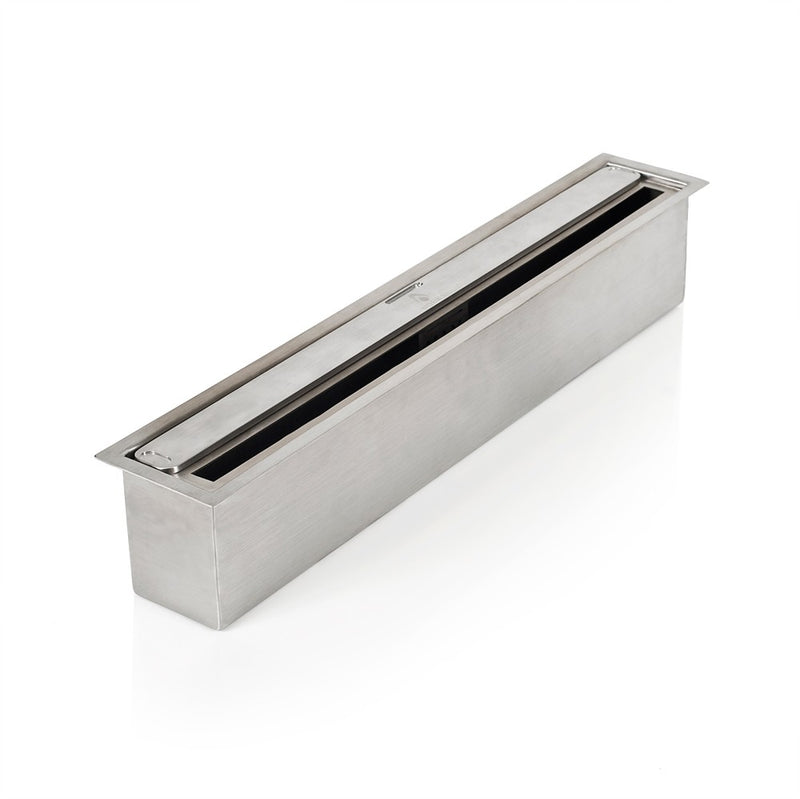Running Costs & Facts
First and most important: THERE IS NO UNIVERSAL ANSWER. Each fireplace is different and both, heat outcome and fuel usage, depend strictly on the type of burner used in the fireplace.
Our estimates: GENERAL IDEA – approx. 80p to £1.45/h for a proper fireplace container (any fireplace with our standard 1.3 L Small Burner fuelbox)
Facts about our Small Bio Burner (featured in most of our wall-mounted and freestanding fireplaces):
- burning time: 3-6 hours per refill.
- one refill takes: from 1 L up to 1.3 L of bio ethanol fuel.
- effective running cost: £0.80-£1.45 per hour (based on buying fuel in bulk, 18 L for £79.99).
- heat output: 3 kW or slightly above.
- flame regulation: yes, by sliding the lid with a control tool (included).
- flue needed: no.
- fumes or smoke produced: none (if flame is not obstructed).
- smell: virtually none (it is a real flame, so you will smell it when you enter a room as nothing that burns can be completely odourless, but the scent is barely present and does not bother 99.9% of people).
- do I need any ventilation: yes – a window which you can open for 5 minutes after having the fire on for a couple of hours.
- can I use bio fuel bought elsewhere? Yes, but you must make sure it is the right one, with ethanol content not greater than 96.6% and designed especially for fireplaces. Remember that you get what you pay for – cheaper brands may produce smell when burning. Also, be very wary of buying your fuel in 5 L containers. In fact, although it is cheaper, the weight of it makes it hard to fill up precisely and you are much more likely to spill the fuel. Never light a container that has been overfilled.
- can I use Aura Fragrance Oil with this burner? Yes, the Small Bio Burner is fitted with a dedicated fragrance diffuser.
- can I use gellified fuel with it? No, because you cannot wash the burner and gel leaves residue.
- does the top of container discolour after time? Slightly, the flame is real so the top of the container will eventually tarnish a bit; this is completely normal and cannot be prevented.
For more info click here

CONTAINER
Small Burner Insert
for Bioethanol Fireplace
Facts about our Regulating Bio Container (50) (most common choice for designing and building your own DIY fireplace):
- burning time: 3.5-7 hours per refill.
- one refill takes: 2 L of bio ethanol fuel.
- effective running cost: approx. under £3 per hour (based on buying fuel in bulk, 18 L for £79.99).
- heat output: 3-4 kW.
- flame regulation: regulating lid and tool.
- flue needed: no.
- fumes or smoke produced: none (if flame is not obstructed).
- smell: virtually none (it is a real flame, so you will smell it when you enter a room as nothing that burns can be completely odourless, but the scent is barely present and does not bother 99.9% of people).
- do I need any ventilation? Yes – a window which you can open but nothing more. Also, your room size is not smaller than the estimated recommended room size (approx. 24 m2 with a ceiling height of 2.4 m). If your room size does not meet the overall requirements, air flow can be improved by opening a door or window frequently. Or you can regulate the flame and burn the fireplace for less than 3.5 hours (at a time) on full opening and less than 7 hours (at a time) when regulated.
- can I use bio fuel bought elsewhere: yes, but you must make sure it is the right one, with ethanol content not greater than 96.6% and designed especially for fireplaces. Remember that you get what you pay for – cheaper brands may produce smell when burning. Also, be very wary of buying your fuel in 5 L containers as, although it is cheaper, the weight of it makes it hard to fill up precisely and you are much more likely to spill the fuel. Never light a container that has been overfilled.
- can I use Aura Fragrance Oil with this burner: yes, this model includes a fragrance diffuser.
- can I use gellified fuel with it: no, because you cannot wash the container and gel leaves residue.
- does the top of container discolour after time: slightly, the flame is real, so the top of the container will eventually tarnish a bit; this is completely normal and cannot be prevented.

CONTAINER 50 Regulating Bioethanol Burner
